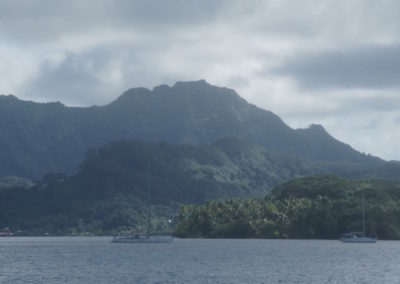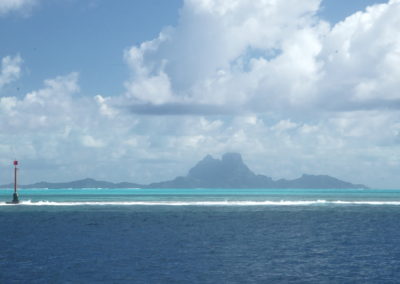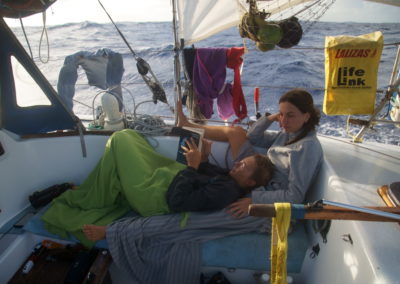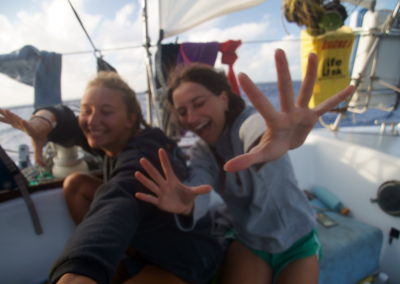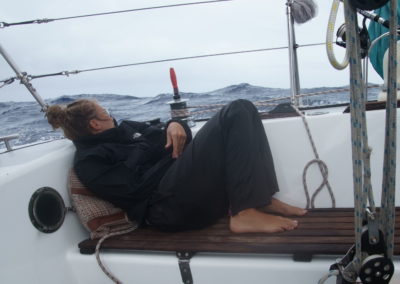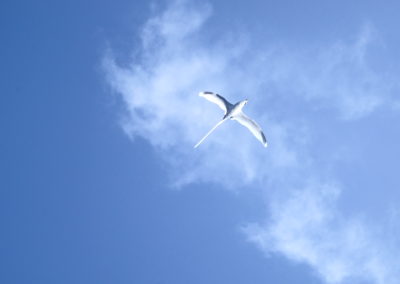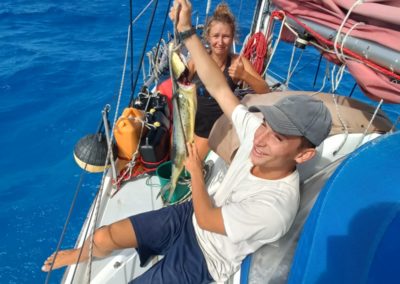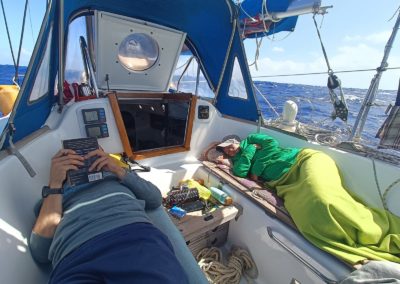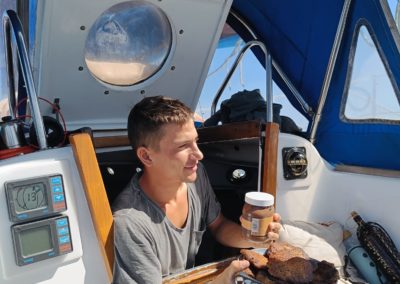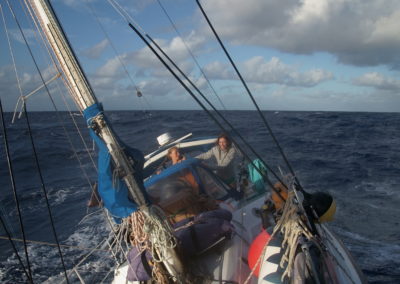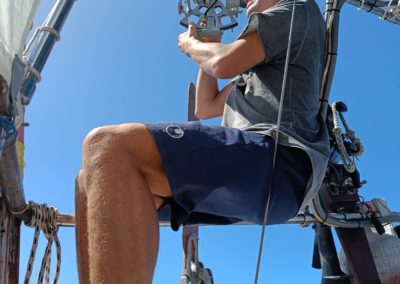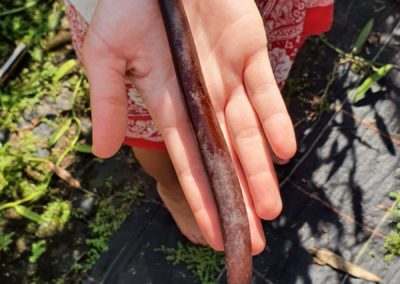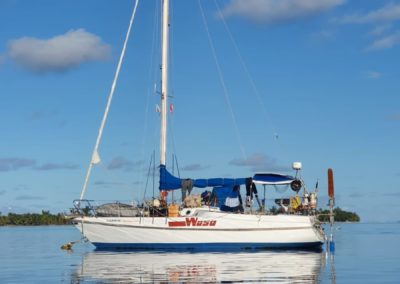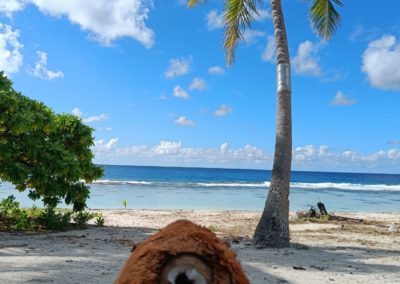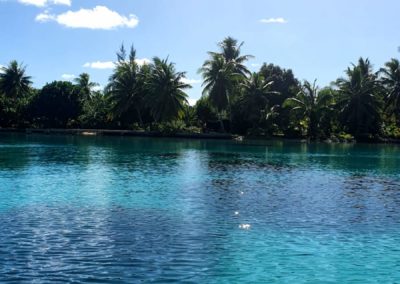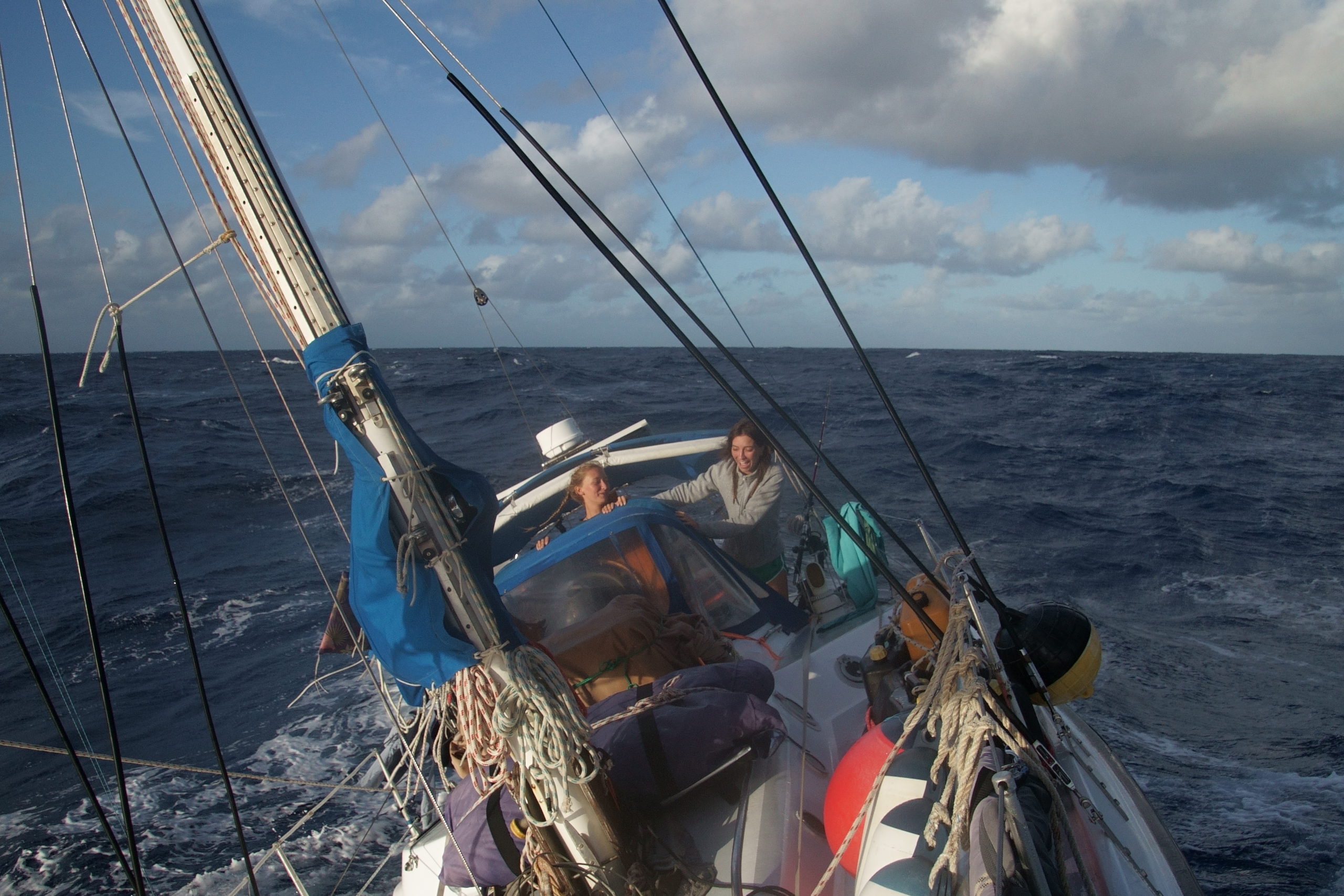
On the 11th of July, almost two months ago, Maelle spent her first night on the boat. The day before, she and a friend already unloaded most of her things on WASA. Five bags! – Luckily two of them were full of food only.
Already in the next morning we started our first trip together. From Papeete we sailed to the neighboring island of Moorea, not that far away. The wind was blowing stong. With 25 to 30 knots it came almost onto our noses, the waves were uncomfortably rough and several squalls chased us on the way. A first small test, which we together rode out well.
In the evening we reached Cooks Bay, a bay in the very north of the island and dropped anchor. Although he never anchored there himself, the bay was named after Captain Cook, who had the transit of Venus observed there in 1969.
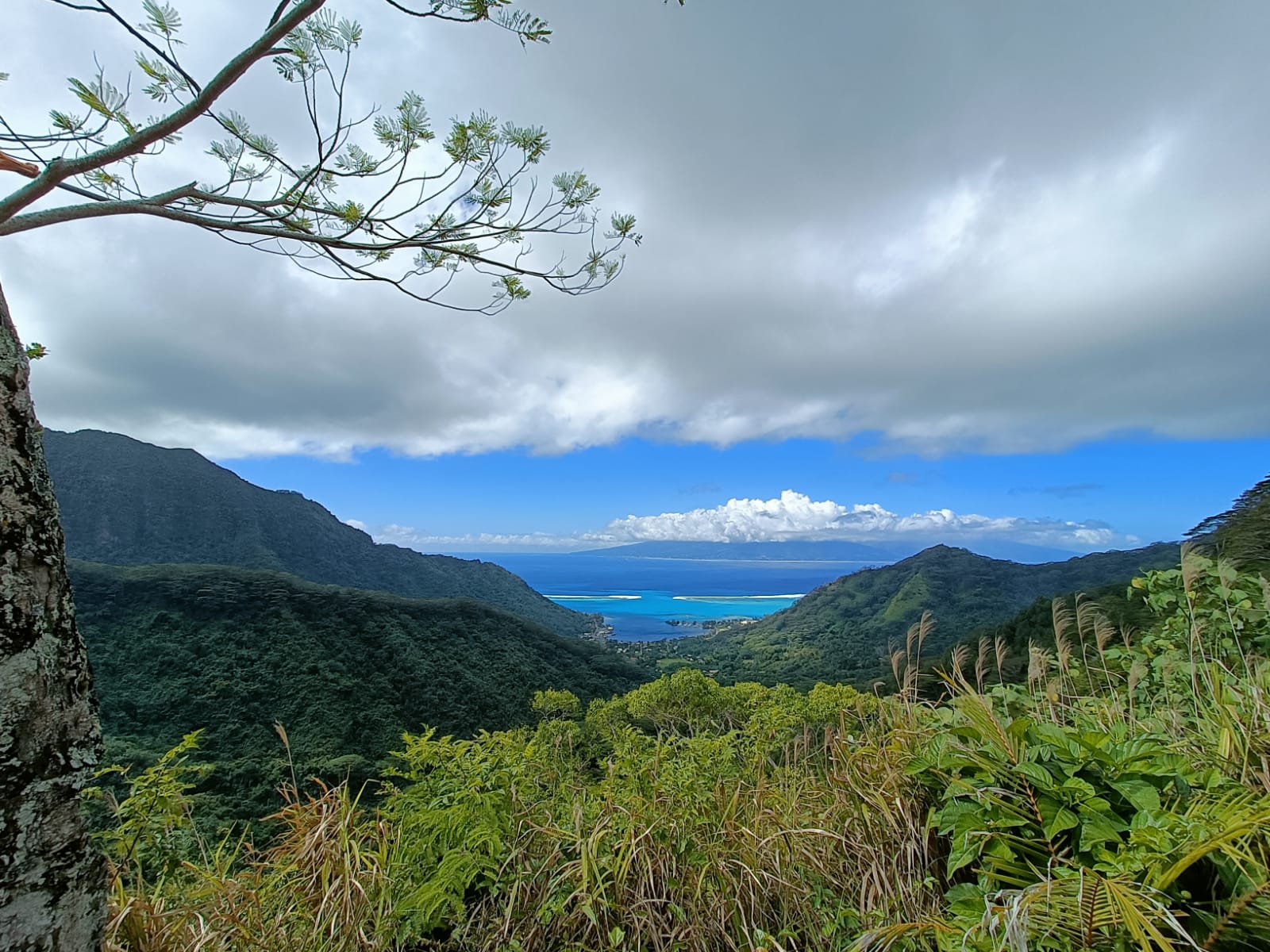
Maelle and I did our own research and explored the island on foot. A five-hour hike took us through cool, shady forest, then steeply up to the crest of the mountains. For a good half hour, we followed the ridge, and then slowly returned down into the valley. We were quite hungry when we made our way back to the boat.
We had arranged to have dinner with Keren. With a delicious, hot lasagna out of the OMNIA – oven and a few beers we got to know each other and discussed the course of the following days: We wanted to sail northwest through the Society Islands to Bora Bora, observe the weather there and find a suitable route to Fiji.
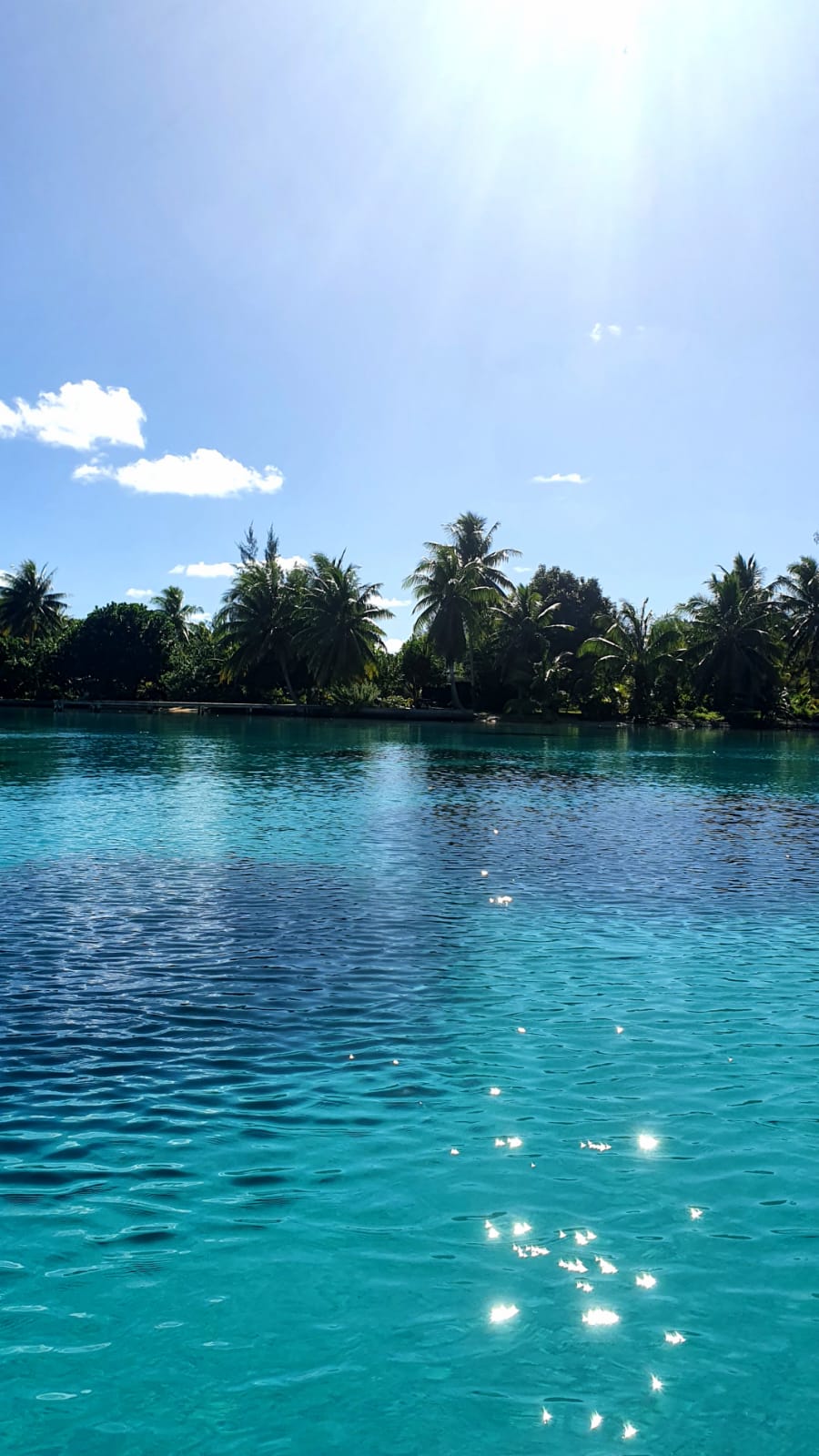
80 nautical miles to the north we had our next stop: the island of Huahine. Little wind, high waves and heavy rain again made for an exhausting crossing, for which we needed over 20 hours. Once there, we visited Samantha. She is a young Polynesian woman who I met earlier when hitchhiking in Tahiti. She invited us to anchor in front of her property and showed us her garden and her vanilla plantation.
The climate of French Polynesia is perfect for growing the vanilla pods! They were imported from South America a few hundred years ago and have since developed into a very fine variety of their own. However, growing the vanilla is very complex: Despite several attempts, it has not yet been possible to import a bee species that would be able to pollinate the very special flowers of the vanilla plant.
The flowering period of the plants extends over four months per year, whereby each flower opens only once and only for a single day. The most important task of the vanilla farmers is therefore to check every day, every single plant and flower in order to be able to pollinate them at the right moment. It takes up to 10 months from pollination to harvesting the finished pod!
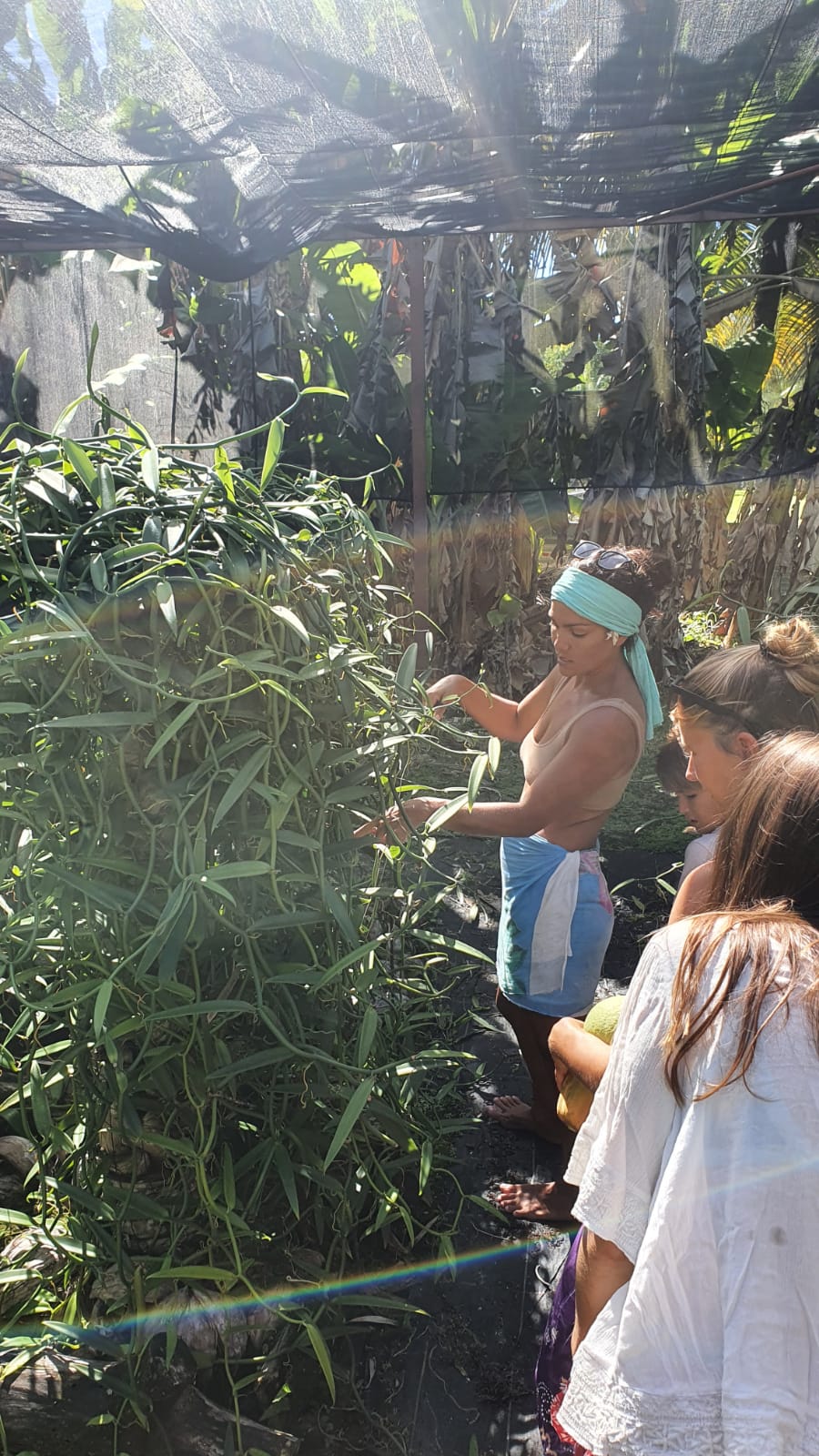
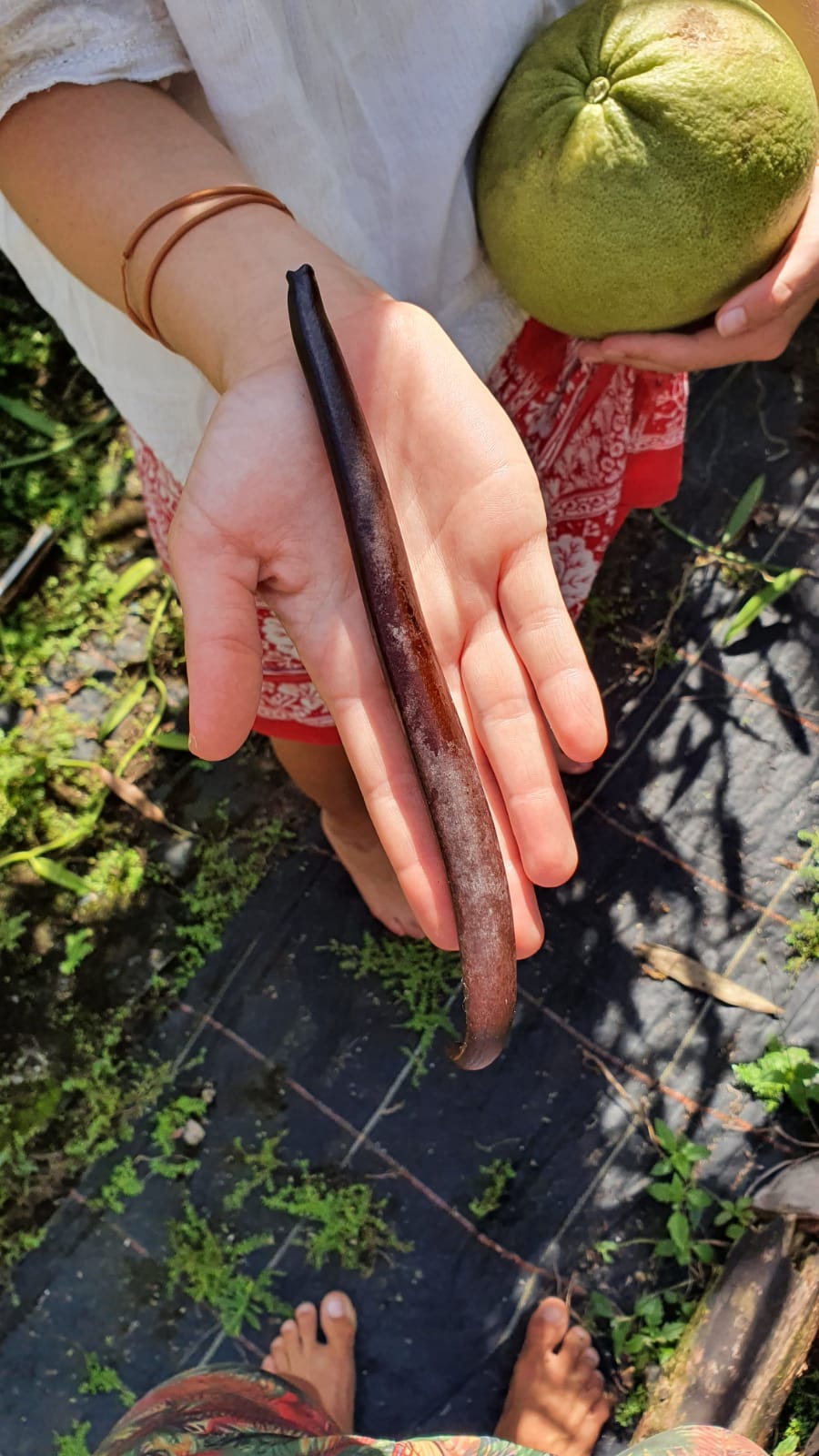
On the 23rd of July, a Saturday, we arrived in Bora Bora. Just in time to watch the final dance performances of the local Heiva – Festival. To traditional live music, several local dance groups competed against each other. The men showed war dances, the women described the beauty and loveliness of Polynesia in their movements.
Weather-wise we were not very lucky: Continuous rainfall put a spanner in the works of our hiking plans. Our freshly washed laundry hung on lines above deck to dry for three days without success . In one week we barely managed just as much as normally in two days.
It was time to sail on. My sister had booked a flight to visit me in Fiji and we only had a little more than three weeks left to cover the 1800 nautical miles (3300km). Several routes with different stopovers were available to us:
The two islands, Maupiti and Maupihaa in French Polynesia, we were unfortunately unable to visit. The weather was too bad, the waves came from the south and made the entrance to the atolls unusable.
The Cook Islands – 500 nautical miles away still had strong Corona restrictions and entry & exit fees were far too hefty for a short stopover.
Instead, we were told about a reef in the middle of the Pacific Ocean: The Beveridge Reef, just seven kilometers long, rises from 5000 meters deep to just below the ocean surface. A small entrance in the west of the reef ring makes it possible to anchor inside the lagoon at 10 meters water depth.
Nothing was visible on Google satellite images; however, photos from an airplane finally gave us an idea of what to expect there. The decision was made! We took the detour to the south. We wanted to visit the reef and then sail either to American Samoa or directly to Fiji, depending on the weather.
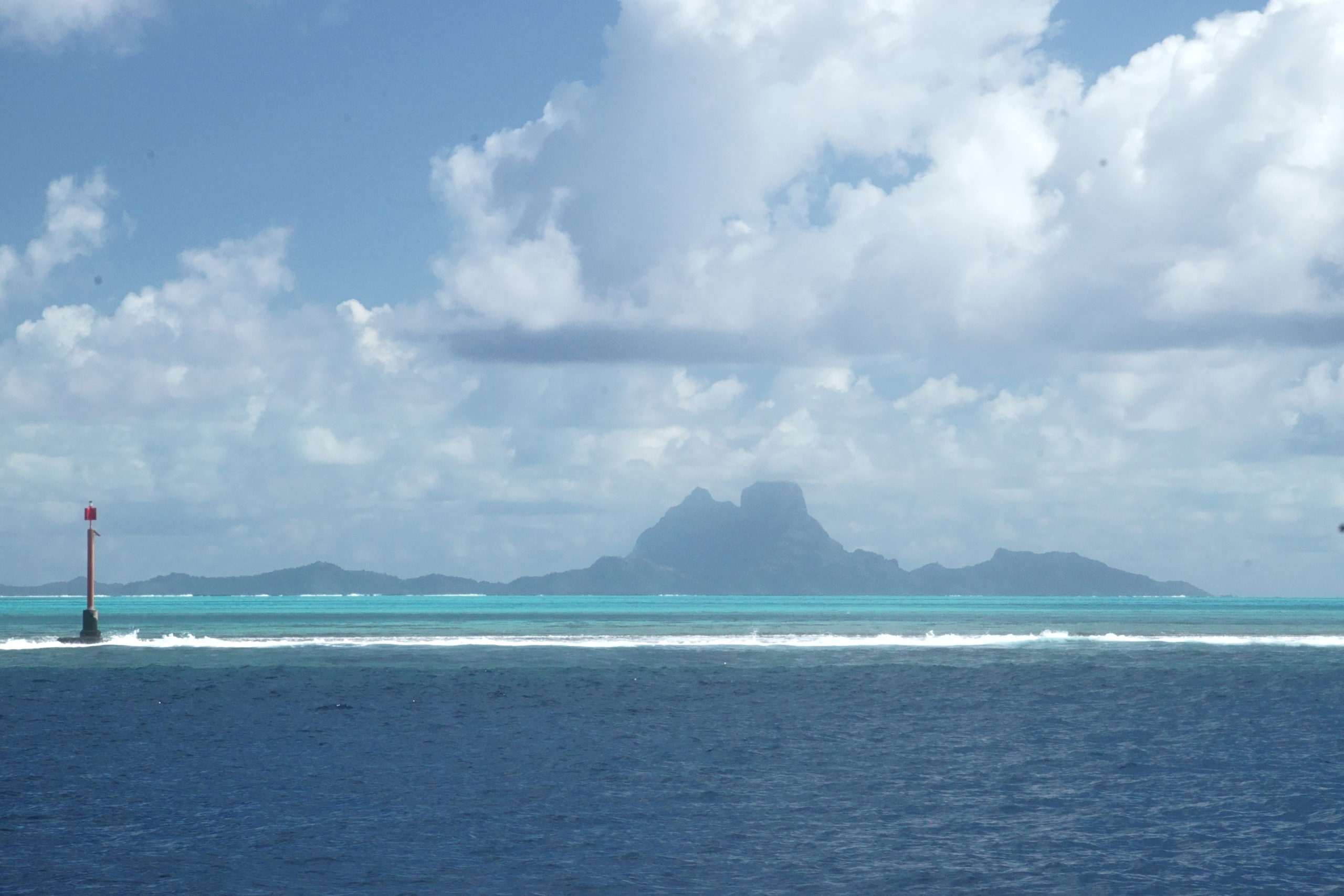
Time to say goodbye. We filled up our supplies, stocked up on fresh water, stowed the dinghy safely on deck and weighed anchor.
The waves have been big from the first minute. Four meters high they piled up behind the boat, lifted us and rushed under the ship. Once we were in the trough of the waves, the horizon disappeared; high above the crest of the wave though, it stretched forever into the endless distance.
This journey is my dream that I finance with this blog! If you want to support me and keep the journey going, please feel free to invite me for a symbolic dinner!
Thank you so much!
Sometimes the waves broke just right behind us. Then my WASA was caught in their wake and surfed down into the wave with at six/seven or eight knots. The bow then got pushed deep into the water, the boat braked and pitched slightly. Never in such a way that it became dangerous, but every now and then the water sloshed over the side of the boat into the cockpit. Blankets, cushions and sailors all got soaked.
On the third day I noted in my diary: „Still uncomfortable. The port bench in the cockpit is considered dangerous. – Waves regularly spill over the coaming. Bagamon game failed because of flying pawns.”
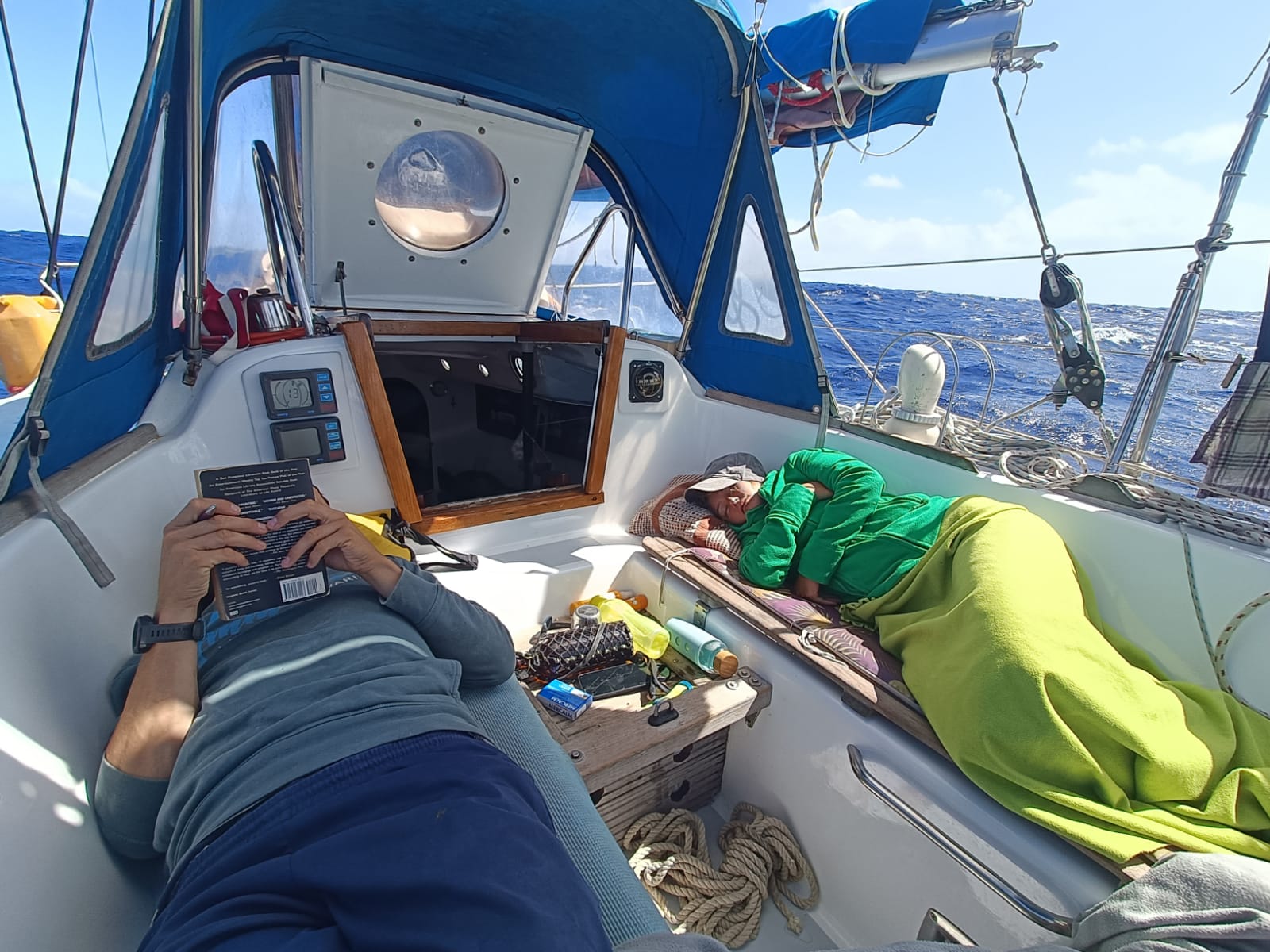
We could have reached Beveridge Reef on the eighth night. But It was noted on the chart that the marked position of the reef can deviate from the actual location by up to three nautical miles. Since no part of the reef is completely above the water surface, the only way to spot the impending danger were the breaking waves itself!
An approach in darkness would have been highly dangerous! We therefore reefed the sails the previous evening so that we could just hold course safely at three knots. As soon as the sun rose, we turned our heads to the west and scanned the horizon for breaking waves.
At nine o’clock – we were only a maximum of two miles away from the marked position – we finally could see consistent whitecaps on the horizon. Breaking waves! „The reef is there!“ We approached cautiously, always careful not to get too close to the dangerous eddies, and finally reached the sheltered, leeward side of the reef.
On a beam reach we followed its course to find the pass, the entrance to the ring. We took down the sails and tried to motor through the pass against wind and outgoing current: No chance! – For this my 16 hp were simply not strong enough.
The only way to get into the (supposedly) calm lagoon was to set the sails and cross against the wind. The chart was inaccurate, but in the crystal clear water the pass stood out quite well against the brownish tinge of the reef. It was only 200 meters wide and 200 meters long, but we still had to tack five times to get to the inside of the lagoon. Five tacks that where more exciting than anything else before: one mistake and the ship would crash on the reef! Several hundred nautical miles from the nearest safe harbor.
Finally, we made our final tack and sailed the last 20 minutes to the other side of the reef in much calmer water. We dropped the anchor and celebrated the first passed leg.
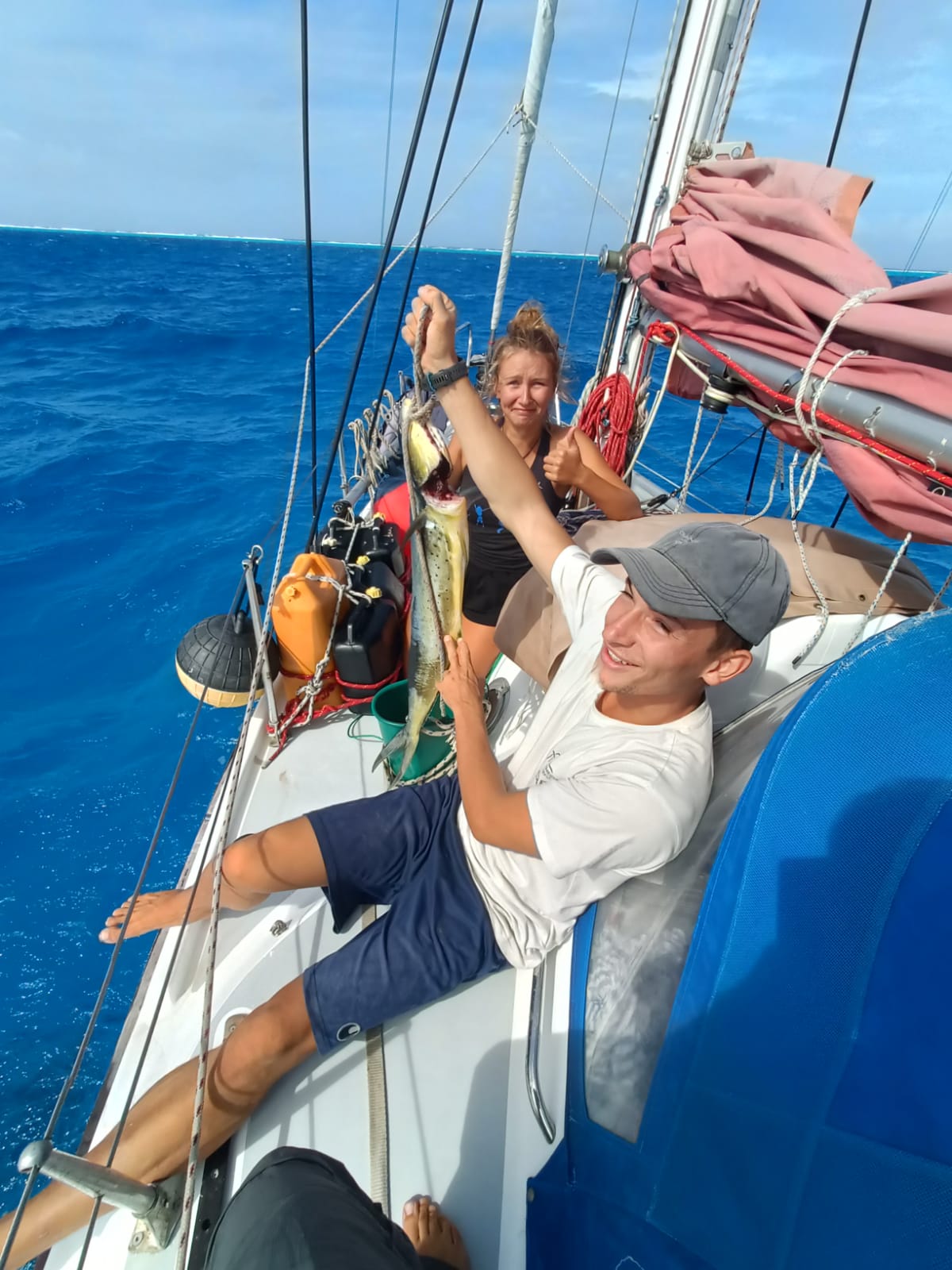
Just before us, another boat came to Beveridge Reef. Jeanne and Lionel, an older French couple anchored their boat NOPNOP just a few meters next to us. We had caught a decent Mahi Mahi just before, so we called them on the radio and agreed to have dinner together later. We dined like the gods! Fresh fish baked together with some vegetables and potatoes in the stove. A small side salad – heavenly! Afterwards we had delicious cheese and red wine, French style.
Lionel and Jeanne told us that not only their autopilot broke down shortly after the departure in Bora Bora, but in addition all sorts of other things broke, too. The laptop got wet and the grey water pumps failed as well. For five days the two had to hand steer the boat. They took turns every two hours, sleeping as best they could in the high waves.
Beveridge Reef was an emergency stop to gather strength and then cover the same distance again towards Fiji. I promised them to have a look at the pilot the next morning to find out if a fix would be possible. The bolt connecting the hydraulic lever arm to the rudder quadrant was broken: 13mm thick stainless steel had split in two just like that! Not only was the bolt broken, but the thread in the aluminum of the quadrant was also rendered useless.
After some back and forth we found a solution: I cut a new thread in the quadrant and used the broken pieces of the old bolt to connect the autopilot. Then I countered the screws with each other so that they would not open even despite the violent vibrations when sailing.
After the work was done, we had lunch together, then we weighed anchor: the weather was just not in our favor. The waves were too high and constantly sloshed over the reef. They made WASA bounce up and down and gave us a sleepless night that we didn’t need to repeat.
NOPNOP gave us some interesting new information: First of all, Western – Samoa had opened its borders again for tourists after more than three years of covidlockdown. And secondly, via their satellite weather, we figured out that conditions were getting worse and a storm with over 50 knots of wind was heading our way. We would not have reached Fiji safely. But by changing course to the north, we were able to avoid the storm and become the tenth ship to clear into Western Samoa after the border opened!
Just a few days later we received a message from Jeanne and Lionel: „We arrived safely in Savu Savu yesterday. Thanks to you, the autopilot worked all the way to Fiji“.
I was really happy about it!

